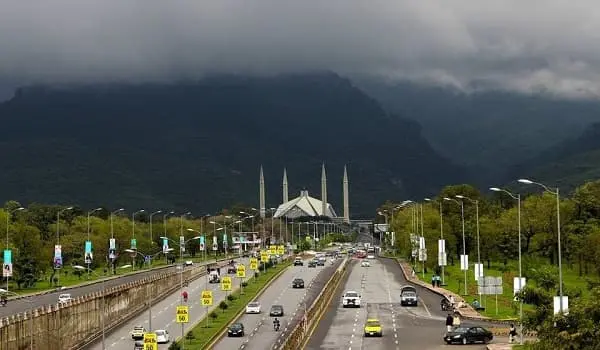ISLAMABAD, Jul 14 (ABC): The air quality of the federal capital after rain turned moderate as a recent spell of monsoon rainfalls lashed out various parts of the country have helped plummet scorching heat in the metropolis and subsided the pollution.
The air quality of the federal capital on Thursday was reported healthy as suspended particles were recorded below permissible limits in the atmosphere along with the pollutants’ ratio due to consistent rainy weather and reduced vehicular traffic on roads.
The air quality data has been collected by the Pakistan Environmental Protection Agency (Pak-EPA) which monitors air pollutants ratio for 24 hours based on three intervals of eight hours of data collection from different locations. The Pak-EPA data revealed that the air quality throughout the three intervals of data monitoring remained high as the pollutants were below the permissible limits of national environmental quality standards (NEQS).
The hazardous air pollutant particulate matter of 2.5 microns (PM2.5), which was a lethal atmospheric contaminant, remained at 19.33 micrograms per cubic meter on average which is higher than the NEQS of 35 mic-programs per cubic meter and denotes the air quality unhealthy.
The PM2.5 is generated through combustion of an engine, industrial emissions, burning garbage or inflammable material, and dust blown up by fast-moving cars plying on non-cemented patches of the roads. Moreover, the frequent forest fires in the federal capital also created high suspended particles, dust, and particulate matter in the atmosphere.
However, the capital continued to give a deserted look as many citizens have returned to their hometowns to celebrate Eid which also turned up limited traffic on the roads which also helped in containing the rising pollution due to vehicular traffic, an official of EPA told.
The particulate matter had exceeded the permissible limits beyond 40 microns prior to the onset of rainfall which was mainly due to persistent hot and dry weather.
The nitrogen dioxide (NO2) and sulfur dioxide (SO2) were recorded below the permissible ratios as they were recorded at 3.89 and 12.4 micrograms per cubic meter in the past 24 hours in the atmosphere against the NEQS of 80 and 120 micrograms per cubic meter respectively.
These effluents were mainly produced during the operational activities of industrial plants and factories that were already under control, he said.
He urged the masses with respiratory conditions and other critical heart or lungs diseases to avoid prolonged outdoor visits and wear face coverings and goggles when the air quality was unhealthy while venturing outdoors.


























